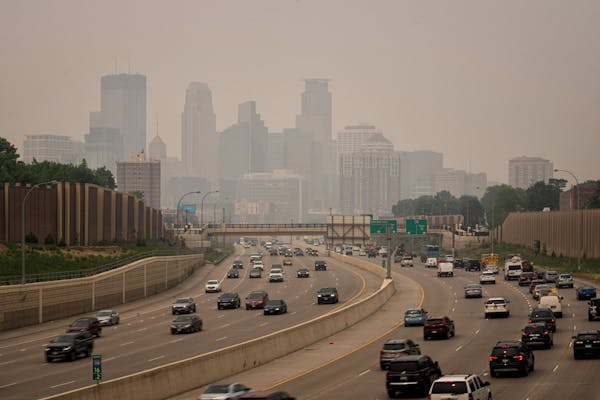Paul Douglas knew this winter would be warmer than usual. He and other meteorologists have had their eyes on a strong El Niño pattern since last summer.
But he didn't expect the Twin Cities to log their warmest winter on record or that lakes across the region would be pocked with open water rather than the thick sheets of ice Minnesotans expect to walk and skate on during the coldest months of the year.
"I'm as dazed and bewildered as everybody else," Douglas said.
The Twin Cities logged its warmest winter on record, with an average temperature of 29.9 degrees between Dec. 1 and Feb. 29, according to WCCO meteorologists. The National Weather Service said it's "going to feel more like the start of May than March" over the weekend, with highs in the 50s and 60s.
It may even reach 70 on Sunday. The weather service has said since November that there's a high chance that higher-than-usual temperatures will persist through spring. While that doesn't mean snow is an absolute impossibility, longer days and the Northern Hemisphere's gradual tilt toward the sun will make it much less likely as the weeks wear on.
The Twin Cities' recent warm streak follows a two-day cold snap that plunged temperatures into the teens and gave the metro area about 0.1 inches of snow in the final week of February. The area saw 14.3 inches of snow overall, among the lowest in recorded history.
But that doesn't mean this winter was abnormally dry. In fact, overall precipitation in the Twin Cities came in above average, Douglas said. It just fell as rain instead of snow.
"We had 2 inches of rain in December," Douglas said. "Had that been snow, that would have been 2 feet, give or take."
The abnormally mild winter was the result of several factors colliding. Observers had already predicted a strong El Niño year and for warm Pacific waters to push east, making for an unusually warm and dry winter.
At the same time, both the Pacific and Atlantic oceans are warming at an alarming rate and exacerbating the extreme fluctuations of local weather patterns. That uptick in ocean warmth is further fueled by carbon emissions that get trapped in the water.
"You can't discount and ignore the elephant in the living room, and that is the fact that the oceans, including the Pacific, are trending warmer than average," Douglas said. "And that warmth is turbocharging these natural cycles."
The Twin Cities' record-setting warmth was evident throughout the winter as several long-running snow- and ice-themed festivals altered their plans or outright canceled. Lakes and rivers that are typically thick with ice were instead open enough for rowers to take to the water.
Those seasonal disruptions came a year after one of the snowiest winters on record. Duluth broke its snowfall record in 2023 when a total of 137.2 inches came down in the North Shore city. A giant snow pile in the parking lot of Eden Prairie Center, dubbed Mount Eden Prairie by social media commentators, captured the public's attention and refused to fully melt until June.
"Talk about weather whiplash," Douglas said.
But he warns against concluding that either one of Minnesota's extreme winters should set an expectation of a new normal. Seasonal temperatures are trending warmer, but the Twin Cities will still see its fair share of snow and ice. It's just that the region is poised to see fewer days with temperatures in the negatives.
If anything, Douglas said, Minnesotans will likely see snowier winters in the future. A warmer atmosphere can hold more water. And even though temperatures will trend higher, they'll still come in below freezing for much of the season.
"You'll have more fuel to power these snowstorms," Douglas said. "As long as it's cold enough for snow, that's the key."
Carolyn Parnell, 'trailblazer' who served as Minnesota's first IT commissioner, dies

